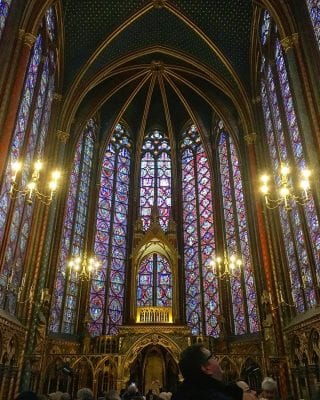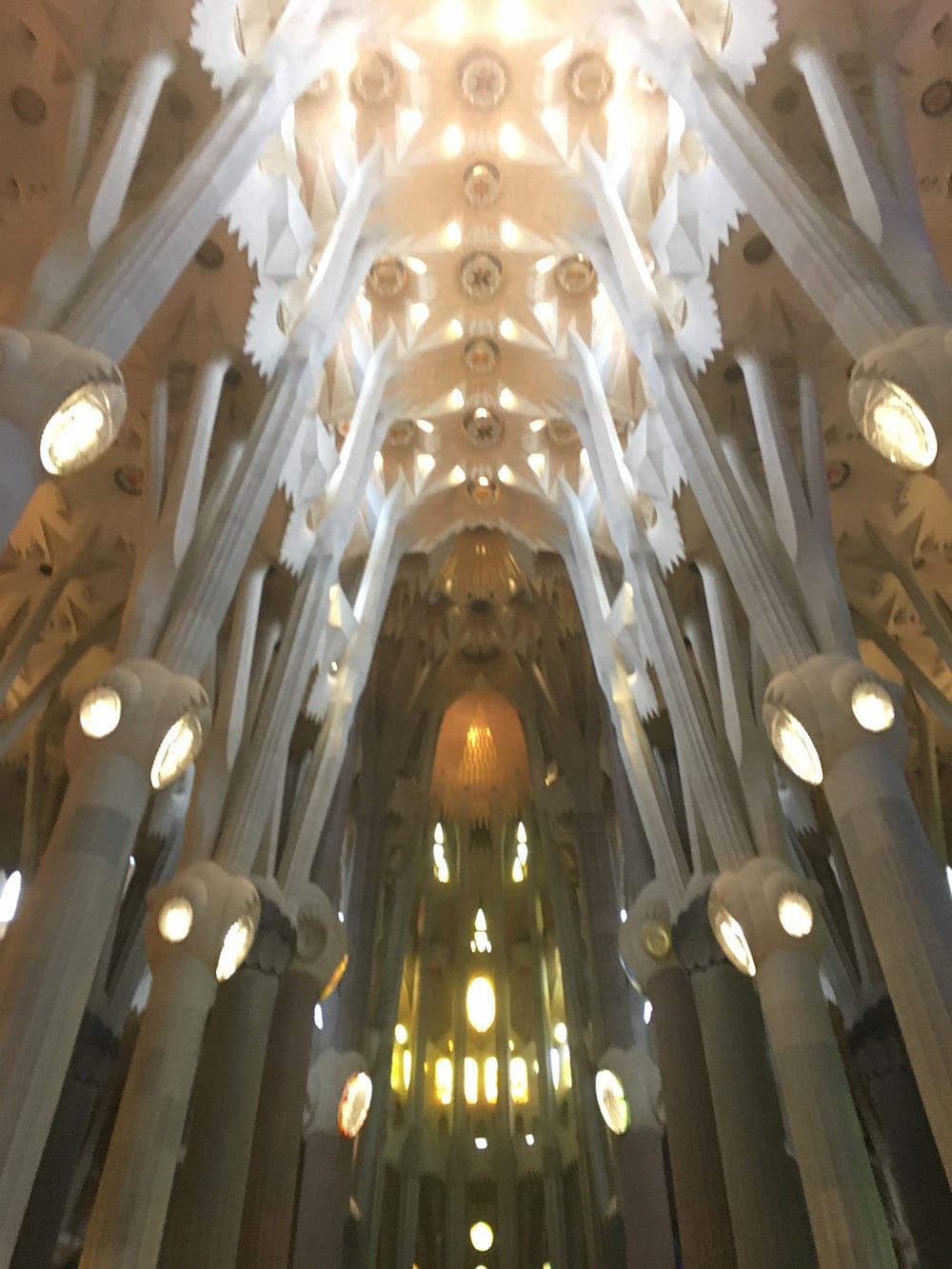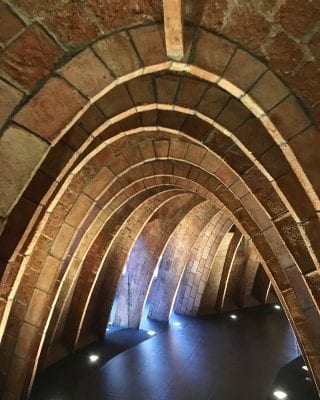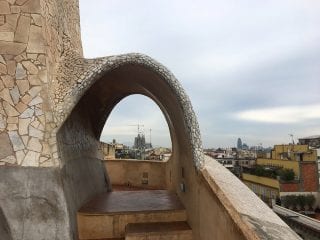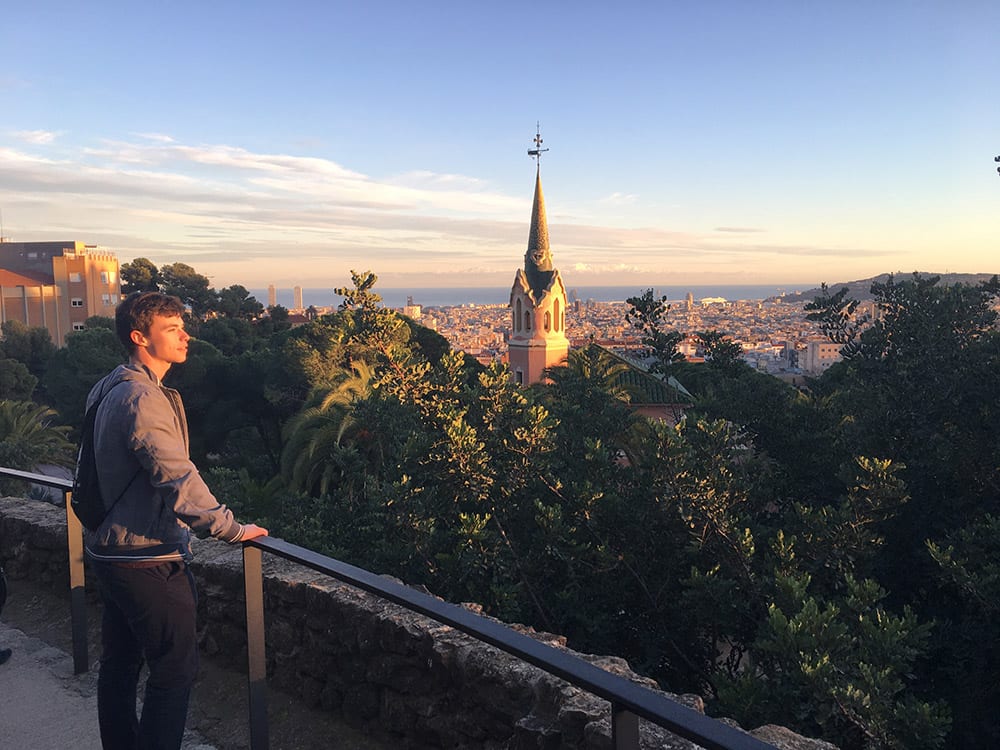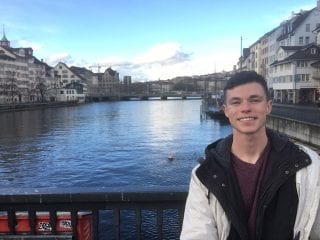January
The lighting shifts from a natural white sunlight to an orange tint as I walk down the travertine stairs to the subway station on a brisk January morning. A small crowd is funneled through the turnstiles and down another stair deeper into the concrete tunnels. The sounds of Italian conversations are overtaken as the train comes to a stop and opens its doors… Beep. Ottaviano. Prossima fermata Lepanto. I get to see a new side of Rome today, another distinct neighborhood of this ancient city connected to this underground system of rail.
I’ve developed a love for great cities in recent years, for their ability to bring a certain level of extraordinary into the daily life of the ordinary. As an architecture student, I expected to come to Europe and study the individual architectural masterpieces for their value as precedent, but this study abroad experience has already opened my eyes to much more than the singular buildings. Cities are the greatest and most complex masterpieces of human creation. They are massive conglomerations of human innovation and investment, and they can serve as models for efficiency in the realm of habitation.
The first month of this study abroad experience has introduced me to European urbanism. I traveled to Paris prior to making my way to Rome. I was blown away by the inner workings of the city, specifically the mass transportation systems. It was amazing that a system as complex as the Parisian Metro seemed to work so flawlessly, yet this is just one layer of the massive series of networks that make up the infrastructure of this great city. I was able to ride the city rail system to the Pompidou Center, Sainte Chapelle, Notre Dame, Versailles and the Louvre, among several other architectural masterpieces.
Upon my arrival in Rome, I was shocked at some of this city’s differences from Paris. Rome is an ancient city and has had certain challenges in dealing with modernization. Where Paris has been able to open up massive boulevards through the urban center, Rome has had a more preservationist’s approach to adapting to modern necessities. In a lot of ways, Rome is a precious gem that must be kept for the world to see, but it also must meet the requirements of a national capital. This adds a whole new layer of complexity to an already amazingly layered city.
The complexity of Rome, as I have come to find during my first month of this study abroad program, is unrivaled, in my opinion. How does a city with the cultural baggage of an ancient empire and the center of the world’s largest religion modernize into a modern metropolis? These are issues that I am discussing in my classes. Each one of my classes has required getting out of the classroom and analyzing several sections of the city, in and out of the historic center. I plan to discuss these issues of modernization in future blogs.
February
Pacing the contemporary streets of Barcelona, every other building with some kind of Art Nouveau-inspired iron or detail work, en route to Sagrada Familia, the city feels much more familiar than Rome. Maybe it’s my relative familiarity with the Spanish language compared to Italian. Whatever the case may be, the city is alive. A rhythm takes over your pedestrian route in downtown Barcelona, as the gridded sidewalks bend at every intersection, the buildings giving prominence and definition to the corners. My destination reveals itself from a distance along the street, the spires and construction cranes of Gaudi’s modern marvel marks its distinguished position in the context of the city.
As expected, some of the most influential and awe-inspiring moments of my study abroad experience to date have been on personal excursions outside the city of Rome. European cities have an incredible repertoire of architectural and urbanistic masterpieces. The first city that I traveled to once settled in Italy was Barcelona. The city of Gaudi’s most famous projects and Mies Van Der Rohe’s German Pavilion, it was an obvious “must-see” for me. While I expected to be impressed by the architecture I planned to see, I did not expect the spiritual experience (for lack of a better way to explain it) that it created for me.
Walking into Sagrada Familia, I was absolutely blown away by Gaudi’s masterful use of scale, material, color and detail. The experience instilled in me a sense of pride in knowing the profession of architecture, specifically contemporary architecture, is exactly where I want to leave my mark on the world. I didn’t realize that humans could (and would) still build something with such exquisite detail and immense commitment. It’s been under construction since 1883, and Gaudi spent 40 years designing it until his death. Sagrada Familia is the contemporary equivalent of the Gothic Cathedral, and it holds its ground with every European church from the Middle Ages.
It was so overwhelmingly beautiful, it nearly brought me to tears. I sat in the pews and sketched the beautifully articulated light of the main apse for two hours, attempting to capture the layering of detail that Gaudi was able to accomplish. Just as I was finishing up my sketch, the overcast skies broke up and allowed direct sunlight to shine through the stained glass, reflecting a rainbow of colored light into the space. What I thought was already breathtaking was made even more beautiful.
After leaving Sagrada Familia, I continued my Gaudi tour at Casa Mila. The attic is where Gaudi demonstrated his genius in that building. It’s as if he imagined the attic as a parametric ribcage of a serpentine dragon. He looks beyond motifs found in nature, as I had expected. He extracts the DNA and hidden structures and uses that in his architecture. The rigor behind his work is what amazed me. Barcelona will forever be the city of Gaudi.
March
With a delayed flight from Vienna, I arrived in Zurich an hour later than expected. It was spring break, so I was carrying a week’s worth of luggage with me through the airport and on the 10 tram to Zurich Hauptbahnhof. My hostel was only a five minute walk from there. There is no metro system in Zurich. The tram system is so incredibly efficient that it’s not necessary to go under the city for navigation. The sky was overcast and getting darker as I approached my destination in the city center. Once I arrived at my hostel, I found that the next available check-in time was four hours later, so, not wanting to waste any of my time in Switzerland, I left with all of my luggage to walk along Lake Zurich to the Le Corbusier Pavilion. Exiting the tram en route to the pavilion, the sky broke open. I had not seen it rain so much since arriving in Europe. Soaked, I ran into an office building, where the Swiss secretaries took some pity on me and allowed me to take momentary cover. As soon as the downpour let up, I continued my short journey to the pavilion. Still, it took me half an hour to find it, because it was hidden under plastic tarps for renovation…
These were my first two hours in a city and country that would soon after become one of my favorite places in the entire world.
Switzerland is home to my favorite architect, Peter Zumthor. Prior to my adventure in Switzerland (which I now refer to as my Zumthor Tour), I knew that I had a great appreciation for Zumthor’s work. His use of materials and his ability to design buildings with atmospheric and elemental qualities are unmatched in any other buildings that I have ever experienced. As I came to find out, he admirably pulls directly from his local vernacular architecture to create an architecture that is truly of its place. As a future architect, it’s often difficult to make a decisive statement about your favorite architect or building, because it tends to place you in a limiting box, but these qualities have developed into an ethos of what I believe architecture should be.
Zumthor’s studio is based in Graubünden, an area of Switzerland where he has completed some of his best known works. The area has become known as Zumthor Valley and has become a Mecca for architects all over the world. The first building I was able to see on my tour of his work was Therme Vals. Therme Vals is a thermal bath complex, spa and hotel set into the mountainside in Vals, Switzerland.
I stayed at Therme Vals for three nights. One morning, I woke up and took a bus through the Swiss Alps to Ilanz. I then boarded a train to Sumvitg. I was the only person to get off at the station in this town of only 1,366 people. I hiked up the mountain for an hour before finally arriving at my destination. The chapel is public, and I was able to enter this architectural masterpiece and sketch for two hours all by myself. Then a group came in, one in a wedding dress, and they told me that she was getting married in the chapel in a few hours. Musicians practiced while I was still in there, and the acoustics of the space were incredible. As I made my way back down the mountain, an old Swiss family offered me a ride back to the train station, which gave me enough time to look around in Ilanz before boarding the bus back to Vals. In a bookstore I found a book detailing contemporary architecture from the Graubünden area. Therme Vals, Kapelle Sogn Benedetg and the Roman Ruins building were all included. Oh, and the weather was beautiful. Haha. Then back to the baths, where I sketched another Zumthor masterpiece. One day. One week in my newly found favorite place in the entire world.

